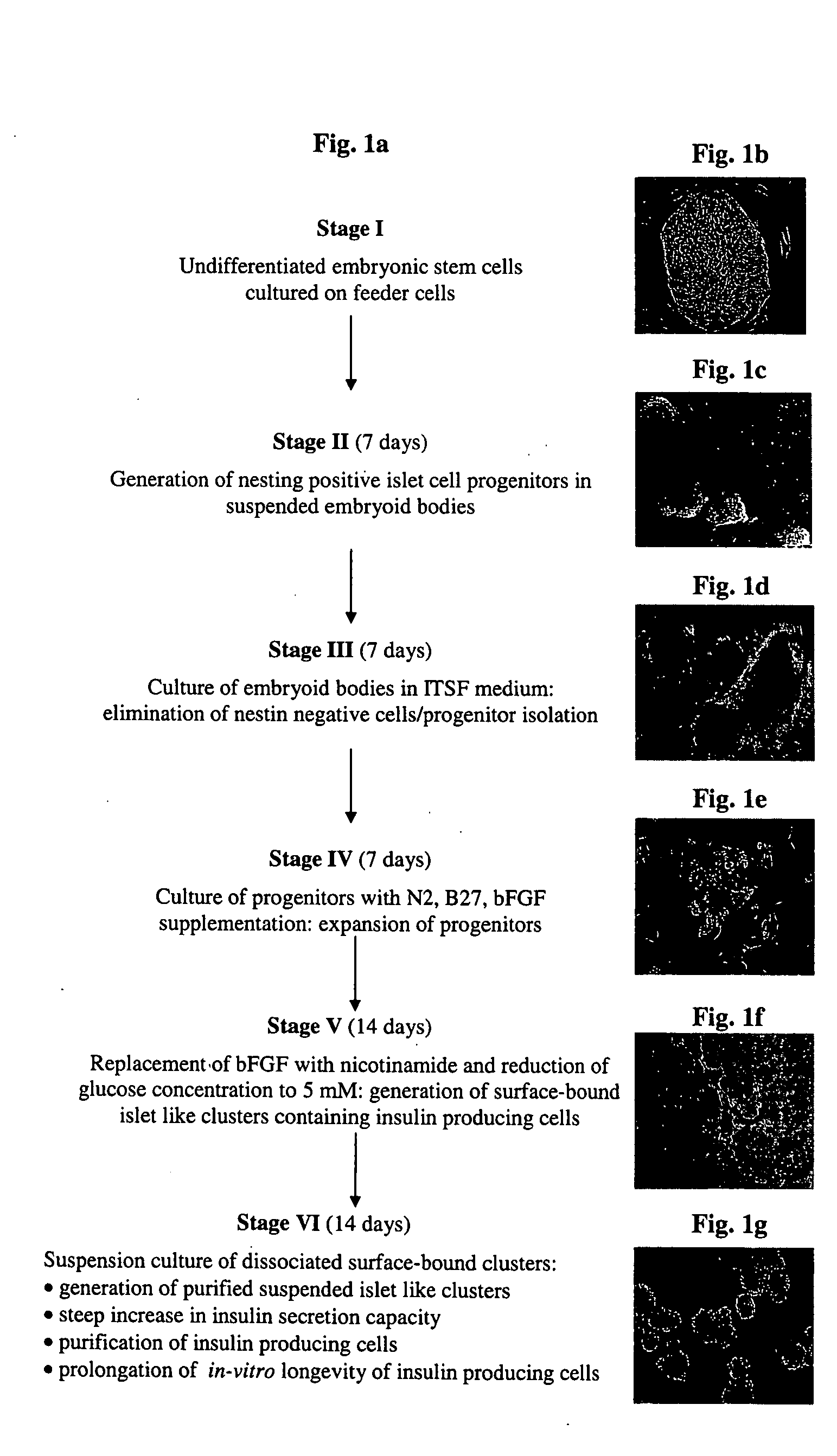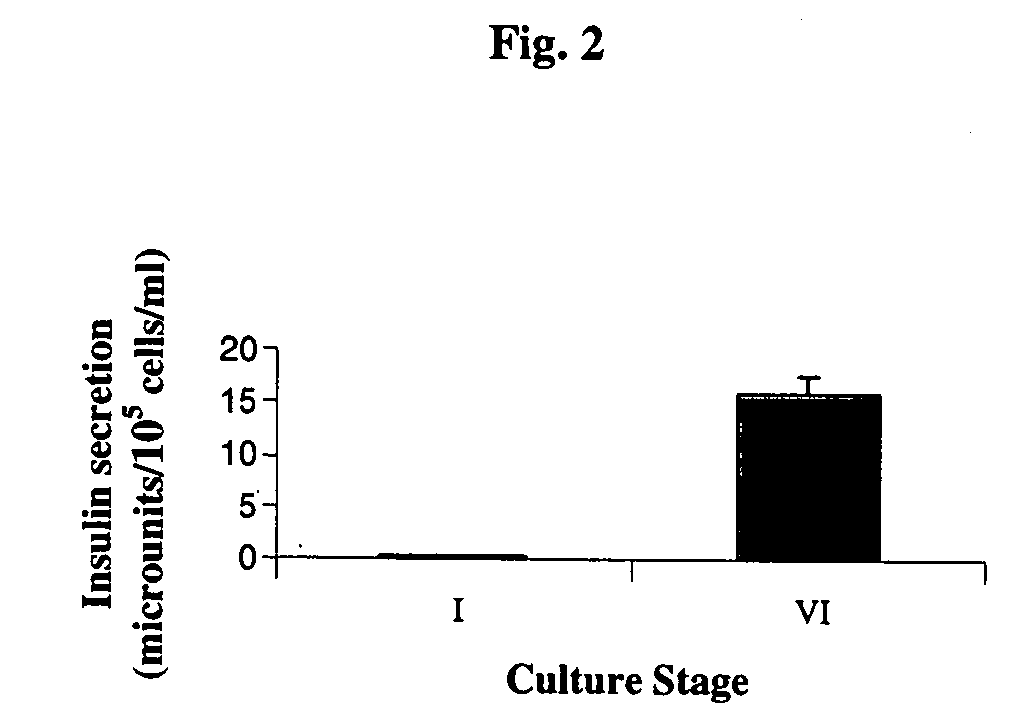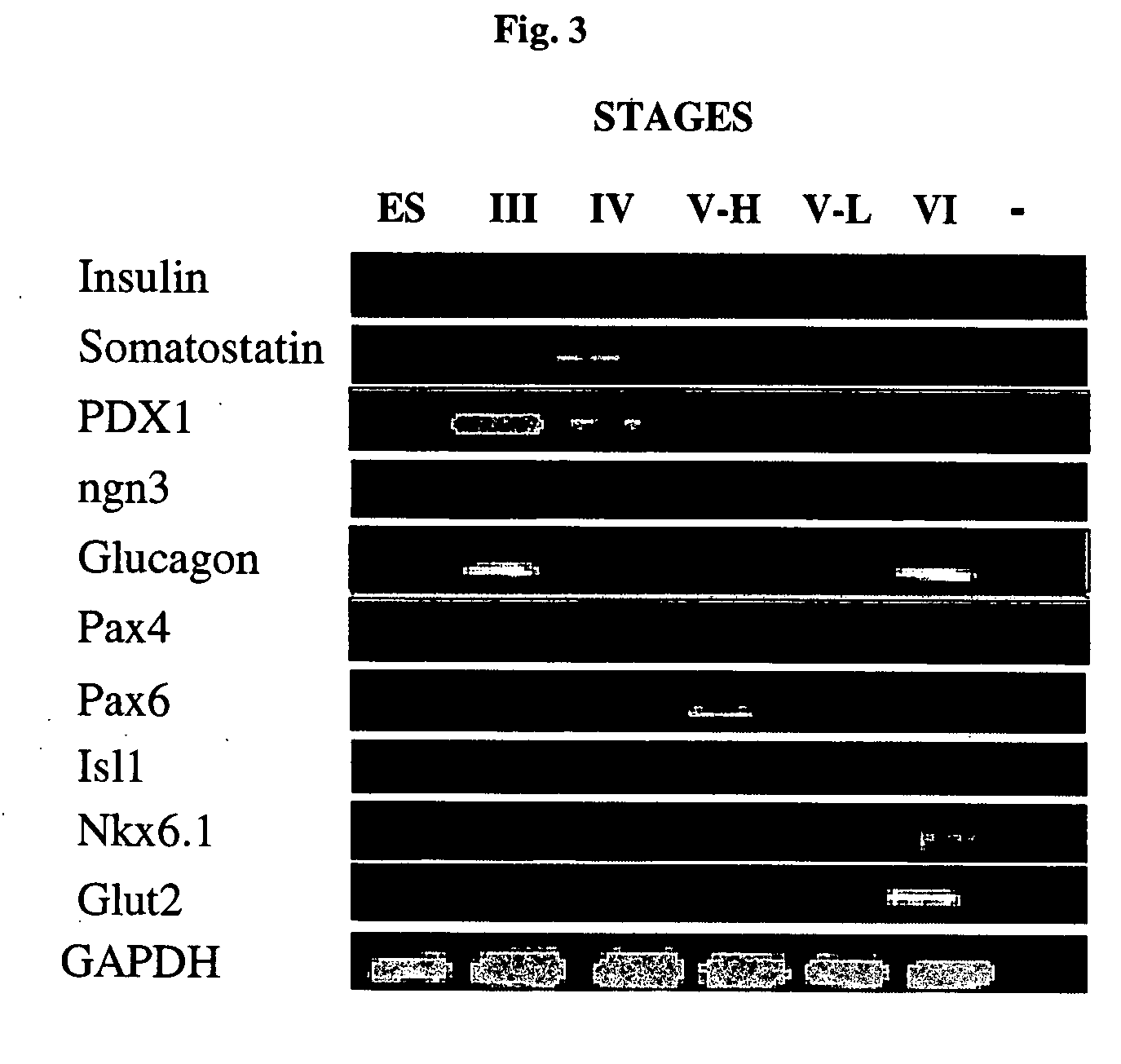Cultured human pancreatic islets, and uses thereof
a technology of pancreatic islets and cultured human, which is applied in the field of cultured human pancreatic islets, can solve the problems of retinopathy leading to blindness, diabetes, and long-term complications that may affect virtually all parts of the body, and achieves the effects of reducing the risk of blindness
- Summary
- Abstract
- Description
- Claims
- Application Information
AI Technical Summary
Benefits of technology
Problems solved by technology
Method used
Image
Examples
example 1
Generation of High-Level Insulin Secreting, Highly Differentiated Human Pancreatic Islet Like Cell Clusters by In-Vitro Culture of Embryonic Stem Cells
[0292] Diabetes is a disease of tremendous medical and economic impact. One approach which has been proposed for treating diabetes involves administering functional pancreatic islets generated by in-vitro culture. However, all prior art approaches of generating such islets in-vitro have failed to provide islets being optimally differentiated, containing optimal proportions of insulin secreting cells, being capable of secreting optimal levels of insulin, and being optimal for human administration. While reducing the present invention to practice, the present inventors have uncovered a method of culturing of human embryonic stem cells to generate highly differentiated, human pancreatic islet like cell clusters containing cells capable of secreting high levels of insulin, as follows.
[0293] Materials and Methods:
[0294] Cell Culture:
[0...
PUM
 Login to View More
Login to View More Abstract
Description
Claims
Application Information
 Login to View More
Login to View More - R&D
- Intellectual Property
- Life Sciences
- Materials
- Tech Scout
- Unparalleled Data Quality
- Higher Quality Content
- 60% Fewer Hallucinations
Browse by: Latest US Patents, China's latest patents, Technical Efficacy Thesaurus, Application Domain, Technology Topic, Popular Technical Reports.
© 2025 PatSnap. All rights reserved.Legal|Privacy policy|Modern Slavery Act Transparency Statement|Sitemap|About US| Contact US: help@patsnap.com



